Why you can trust Tom's Hardware
Benchmark Results and Final Analysis
Our standard benchmarks and power tests are performed using the CPU’s stock frequencies (including any default boost/turbo), with all power-saving features enabled. We set optimized defaults in the BIOS and the memory by enabling the XMP profile. For this baseline testing, the Windows power scheme is set to balanced (default), so the PC idles appropriately.
To get the most out of the Intel Alder Lake chips, you need to be on Windows 11 with its updated scheduler. In most cases, Windows 10 performs well. However, some tests (Cinebench R20, Corona and POVRay) take a significant hit. In short, if you’re going with Alder Lake, you must upgrade to Windows 11 for the best results across the board. That may change with patching and updates in the future, though.
Synthetic Benchmarks
Synthetics provide a great way to determine how a board runs, as identical settings should produce similar performance results. Turbo boost wattage and advanced memory timings are places where motherboard makers can still optimize for either stability or performance, though, and those settings can impact some testing.



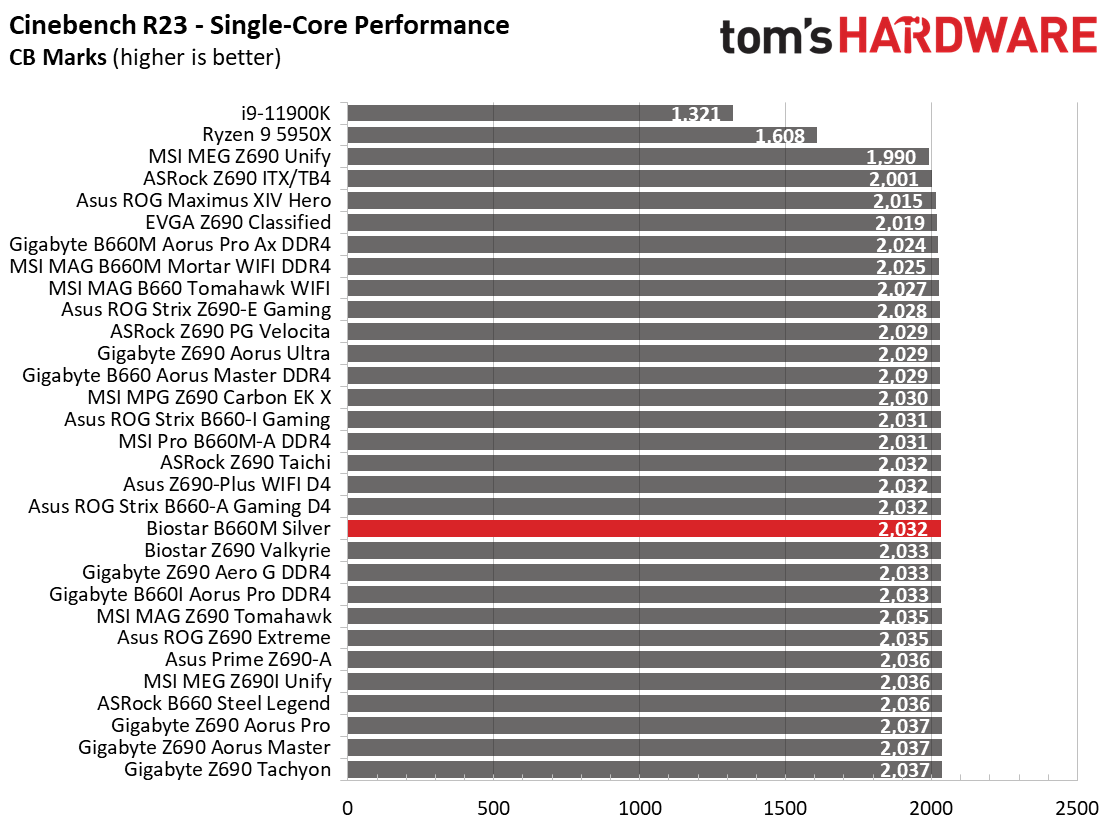


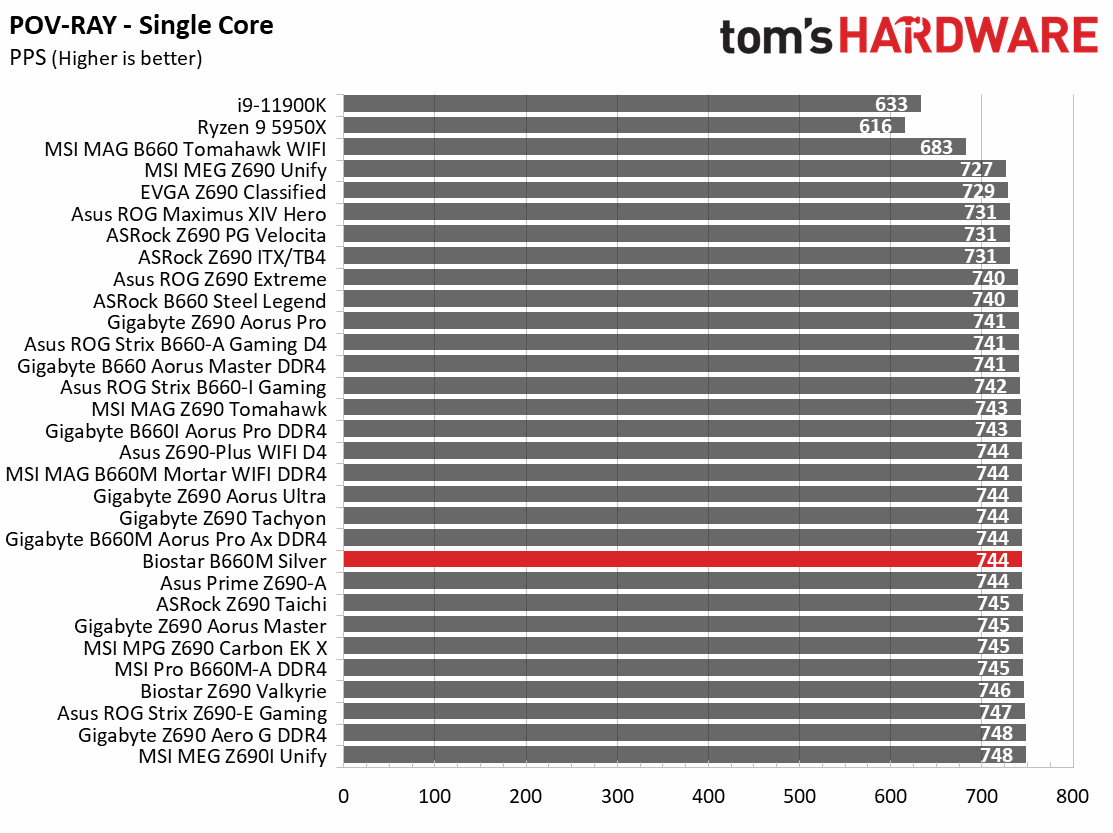




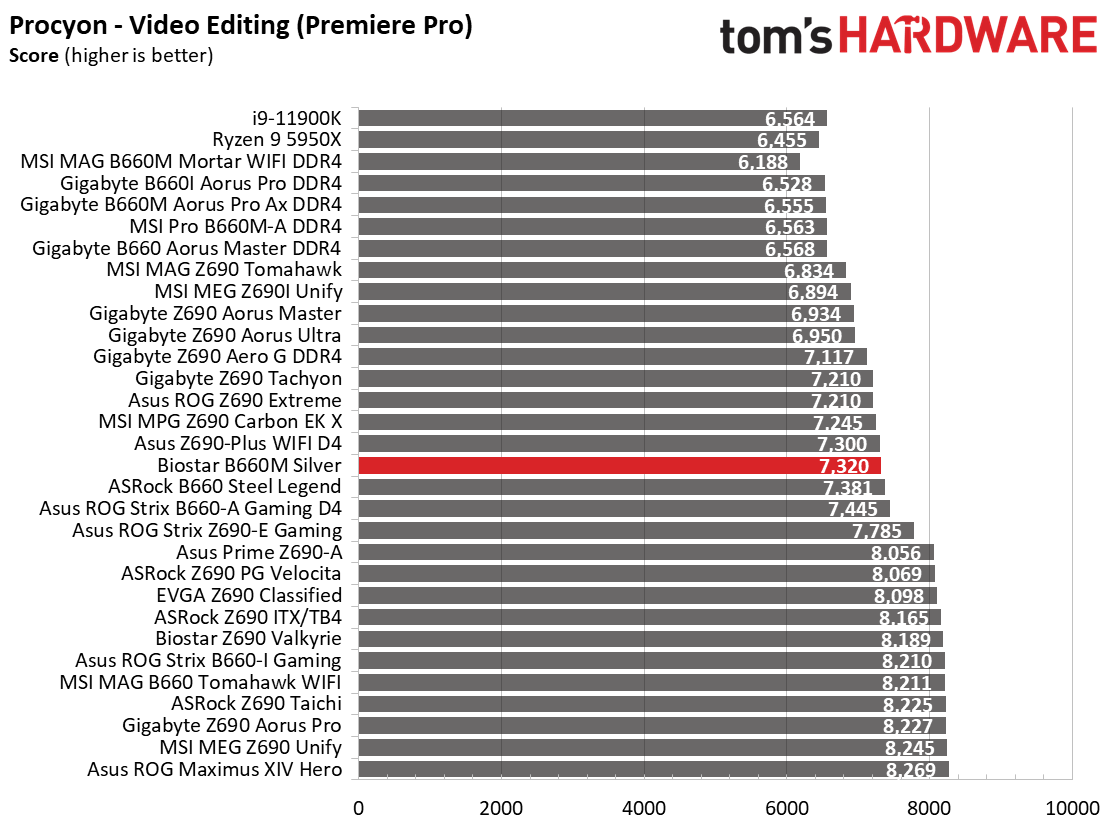



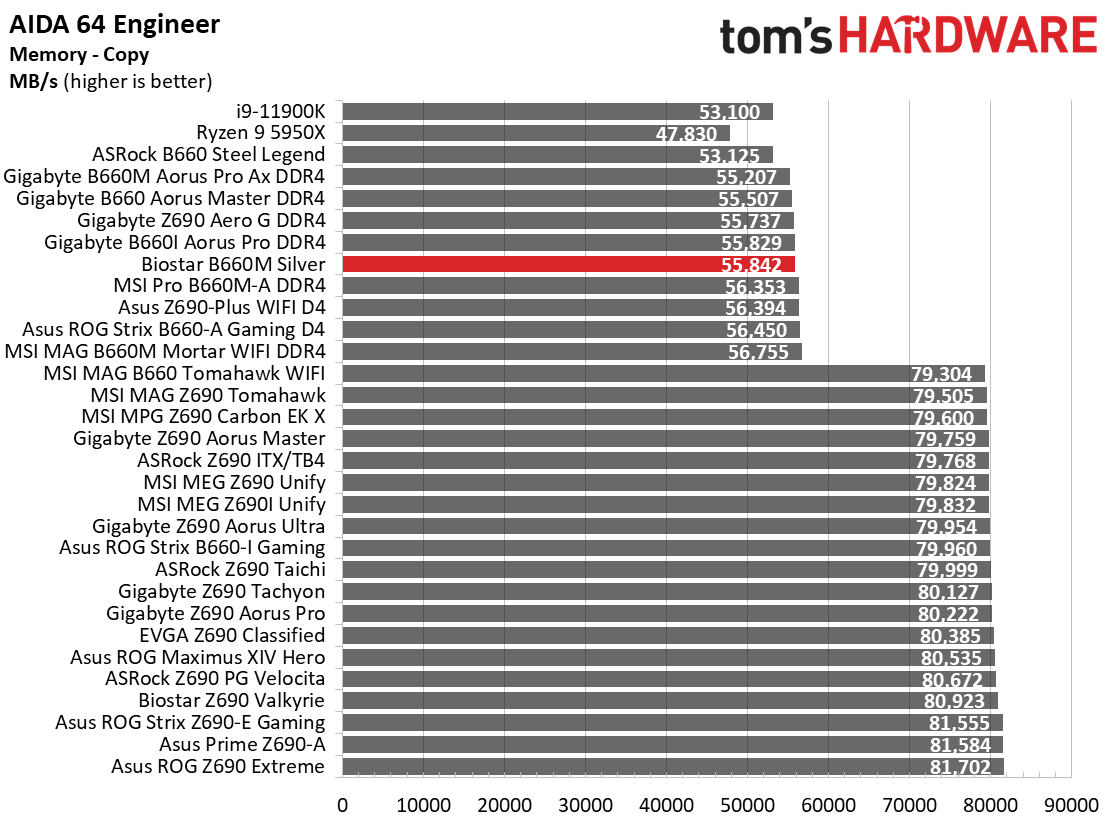

The B660M Silver performed well during most synthetic benchmarks, landing around the average of other DDR4-equipped motherboards. The only below-average tests were Cinebench R23 and POV-Ray’s multi-threaded tests. But if you’ve read our previous reviews, you know that’s a recurring theme due to the thermal throttling of the processor. The Procyon tests were all averag, as was the AIDA64 memory bandwidth.
Timed Applications




In the timed applications, the B660M Silver mixed in with average for LAME and Corona but was slower than most in Handbrake. LAME testing was completed in 9.60 seconds (average is 9.69) and 52 seconds in Corona (spot on the average). The x264 test completed in 120 seconds, against a 115-second average, and 305 seconds in x265 (barely above the average of 303 seconds). Nothing off here either.
3D Games and 3DMark


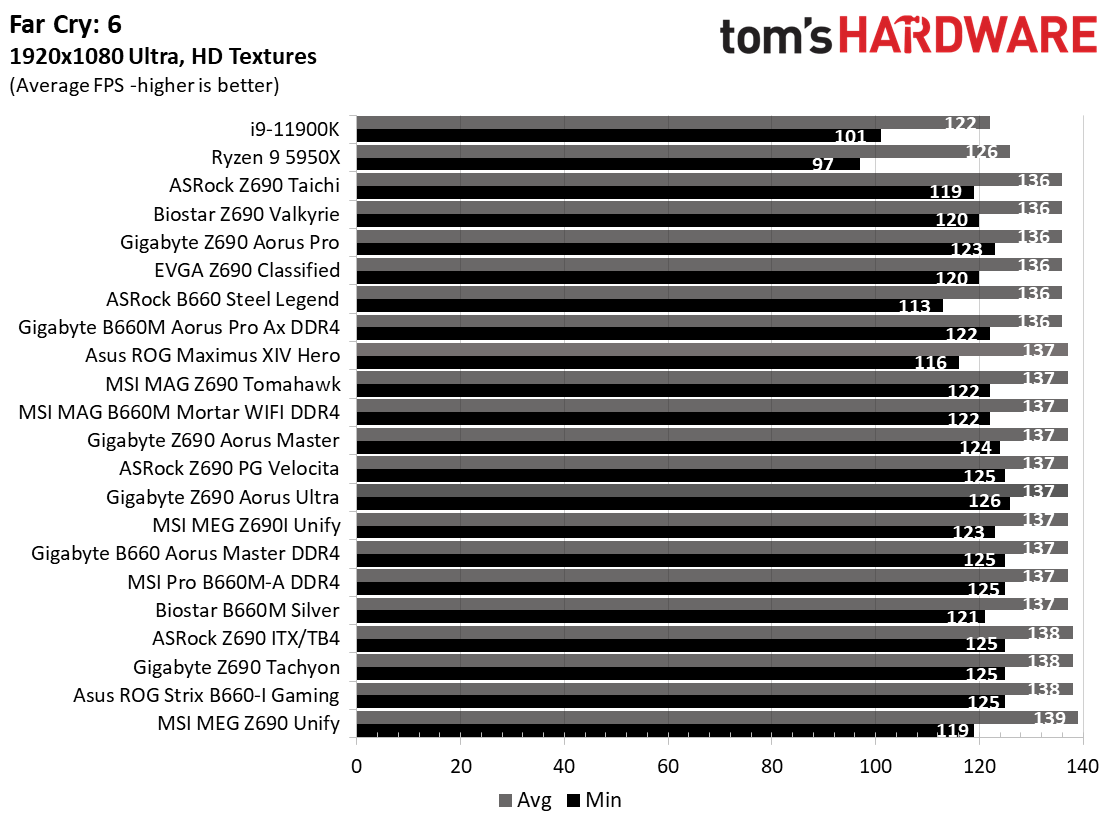
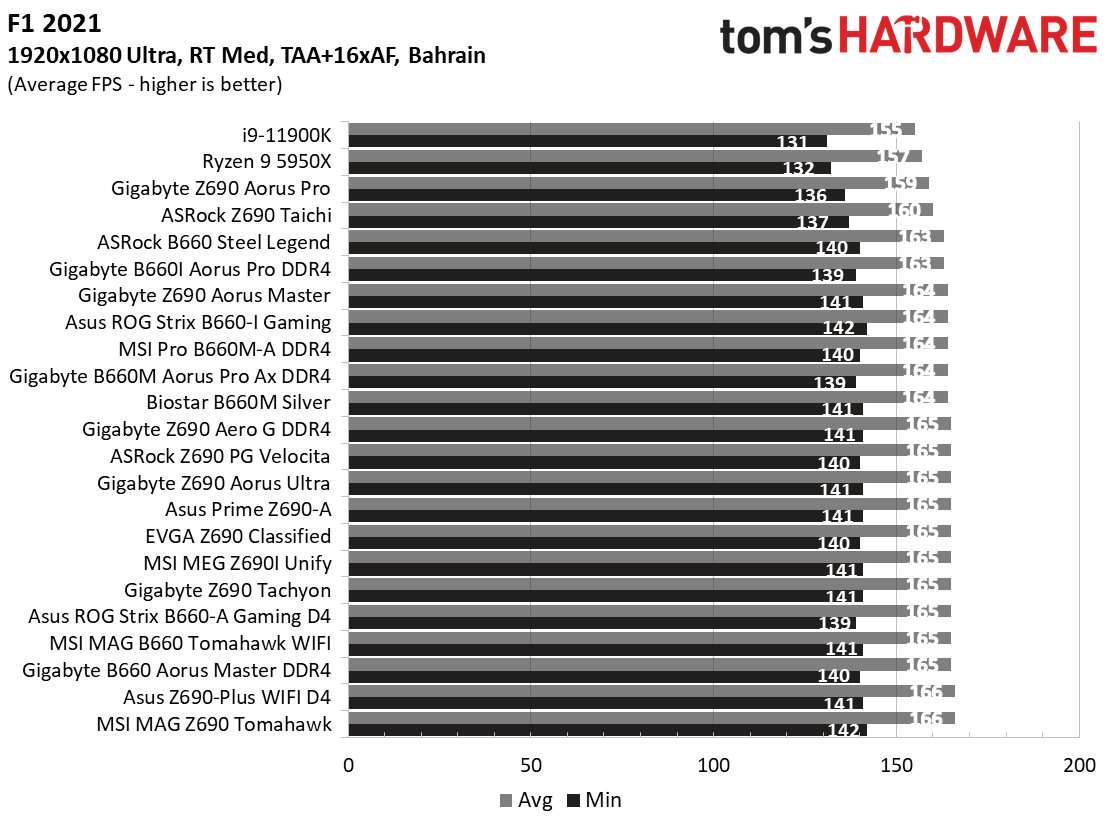
Starting with the launch of the Z690 chipset, we’ve updated our game tests, moving to Far Cry 6 and shifting from F1 2020 to F1 2021. We run the games at 1920x1080 resolution using the Ultra preset (details listed above). As the resolution goes up, the CPU tends to have less impact. The goal with these settings is to determine if there are differences in performance at the most commonly used resolution with settings most people use or at least strive for. We expect the difference between boards in these tests to be minor, with most falling within the margin of error differences. We’ve also added a minimum FPS value, which can affect your gameplay and immersion experience.
In F1 2021, the B660M Silver proved itself a performant entrant, lurking around the average of all the boards with 141 frames per second minimum and 164 frames per second average. In Far Cry 6, the story was the same, as our testing showed a 121 frames per second minimum and 137 frames per second average.
Get Tom's Hardware's best news and in-depth reviews, straight to your inbox.
In our synthetic 3DMark tests, the Biostar scored 14,201 on Time Spy and 17,899 on Fire Strike Extreme. All the results for games and gaming benchmarks blend in with our other results and shows the B660M Silver is a competent gaming motherboard.
Power Consumption / VRM Temperatures

We used AIDA64’s System Stability Test with Stress CPU, FPU and Cache enabled for power testing, using the peak power consumption value. The wattage reading is from the wall via a Kill-A-Watt meter to capture the entire PC minus the monitor. The only variable that changes is the motherboard; all other parts are the same.
At idle, the DDR4-based Silver consumed 47W from the wall, with load power shooting up to 345W. While the idle value is good and better than most, the load wattage was higher than average.
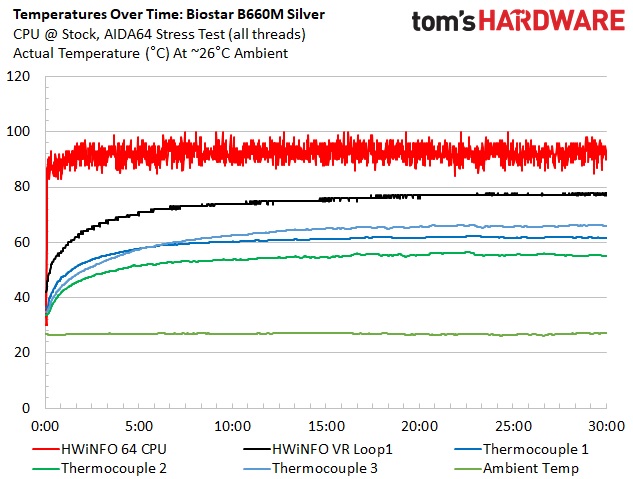

During stress testing, we saw very little throttling, which was surprising. The 70A MOSFETs and the heatsink keep the power bits running within specification. The board peaked around 66 degrees Celsius on our external sensors and 78 degrees Celsius in software, both well within specification.
Overclocking

Overclocking the CPU isn’t possible on B660-based chipsets, but the platform allows memory speed adjustment. With our DDR4-3600 and DDR4-4000 kits, we simply set XMP, and off we went without a hitch. Surely there’s some headroom left, but unless you’re chasing after every ounce of performance, we suggest sticking with the sweet spot, around DDR4 3600 with a low CL rating.
Bottom Line
Priced at $159.99, the Biostar B660M Silver is an inexpensive Micro ATX Alder Lake option for the general user. The board doesn’t do anything poorly, but also doesn’t deliver anything spectacular. That isn’t a bad thing, though! Hardware-wise, the B660M Silver includes what’s expected for this class board. You get capable power delivery, two M.2 sockets and four SATA ports, premium last-gen audio, plenty of USB ports on the rear IO, and more. While there are plenty of comparables in this space, it’s still a worthy option to for your Alder Lake processor.
As far as competition goes, all major partners have an option around this price range. The ASRock B660M Steel Legend is the least expensive at $114.99 (down from $159.99). Asus’ TUF Gaming B660M-Plus WIFI D4 sits at $169.99. Gigabyte’s B660M Aorus Pro AX is also $169.99, and the MSI MAG B660M Mortar WIFI DDR4 is $159.99, just like the Biostar. Most of the hardware in this range is similar, offering two M.2 sockets and at least four SATA ports (MSI and ASRock have six). The difference comes in audio codecs (Biostar and MSI have the best here), integrated Wi-Fi (the Biostar and ASRock do not come with it), and maybe a few other things like USB port count and speed. If it’s looks you’re after and need integrated RGB, ASRock and Gigabyte have you covered on that front.
The Biostar B660M Silver is a great affordable way into the Micro ATX Alder Lake space. The black-on-silver design fits most build themes and doesn’t draw attention to itself out of the box. Hardware-wise, it has most everything users are looking for. But for the price, I would like to see Wi-Fi included as most of the other comparables include that handy feature. If you’re looking for a B660-based Micro ATX motherboard, the B660M Silver doesn’t stand out compared to others, but is still a worthwhile consideration for your Alder Lake needs.
MORE: Best Motherboards
MORE: How To Choose A Motherboard
MORE: All Motherboard Content

Joe Shields is a staff writer at Tom’s Hardware. He reviews motherboards and PC components.